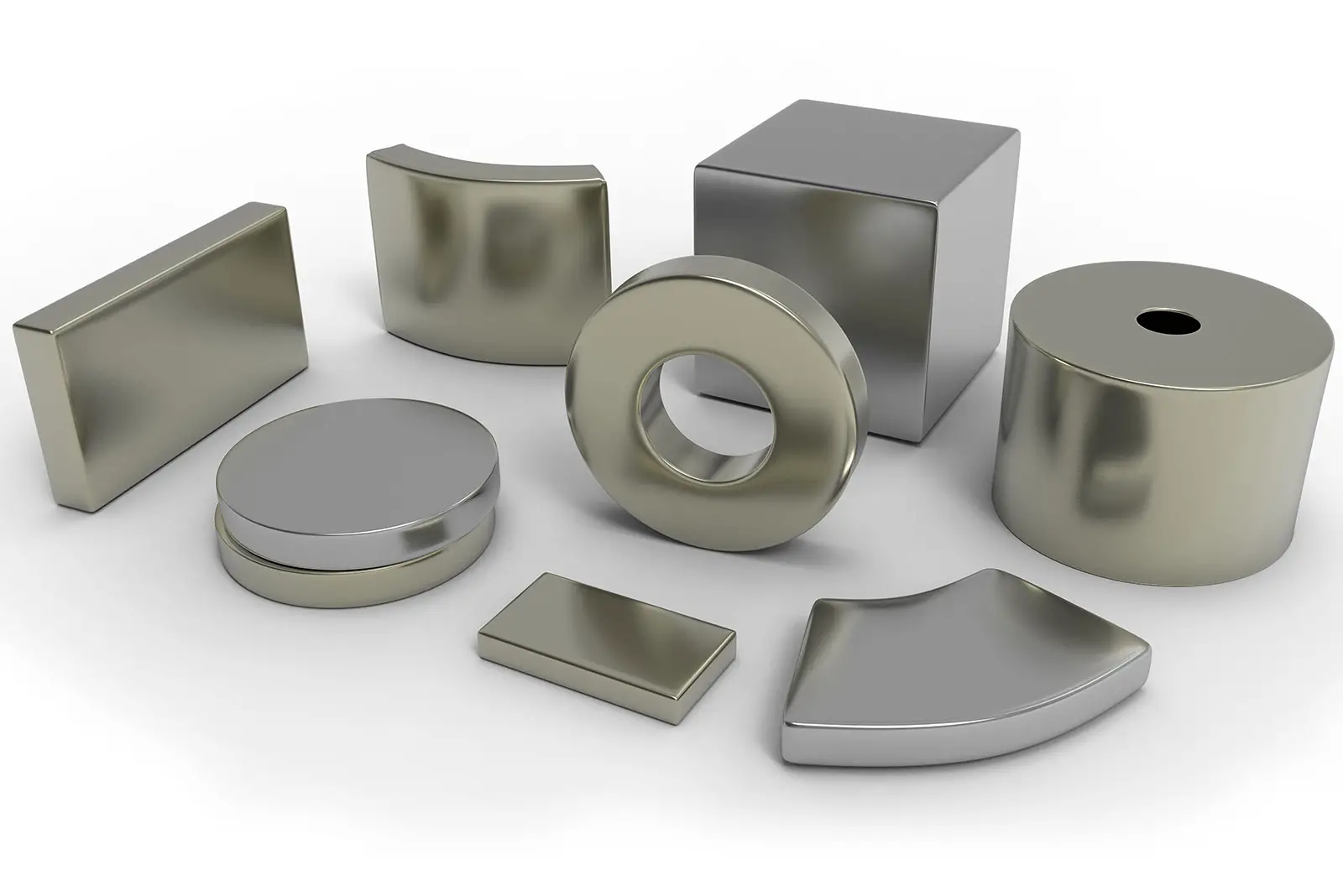Wanna know what are the 10 exclusive examples of magnetic material in daily life? If yes, then you are at the right place at the very right time. So, what are magnetic materials anyway? Materials that possess magnetic properties are magnetic materials.
One can also say that magnetic materials that interact with magnetic fields or be influenced by external magnetic fields are known as magnetic materials. It plays a crucial role in various technological advancements and everyday applications. In fact, they have revolutionized countless industries, from technology and energy to medicine and transportation.
In this exclusive article, we will discuss 6 intriguing examples of magnetic materials and also explore how their ability to attract and repel other magnetic materials has revolutionized today’s world. So, without wasting any more time, let’s dive right in…!!!
Examples of Magnetic Materials: A Comprehensive Guide
- Chromium Dioxide
- Bismanol
- Alnico
- Ferrite
- Neodymium
- Iron
Chromium Dioxide

The very first one in my list of exclusive magnetic material examples in real life is Chromium Dioxide. Chromium dioxide is an inorganic compound with the formula CrO2 that is commonly used in the manufacturing of audio cassettes and video tapes due to its exceptional magnetic properties.
To be more specific, its high coercivity and saturation magnetization allow for excellent recording and playback quality. They were widely used in the late 1980s and early 1990s. However, with the inception of other technologies like compact discs (CDs) and later with the arrival of digital media, their use has been limited to some extent.
Bismanol
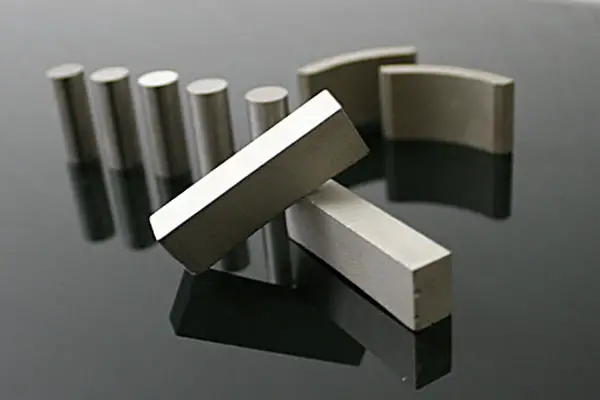
Bismanol, also known as Manganese bismuth is a unique permanent magnetic material made from powder metallurgy of manganese bismuthides that exhibits the colossal magnetoresistance (CMR) effect. These materials typically allow for significant changes in electrical resistance under the influence of an externally applied magnetic field.
This type of magnetic material is the ideal candidate for use in electrical and electronic devices such as sensitive magnetic sensors and high-density data storage devices. In fact, as per Pacific Northwest National Library, these high-purity alloy is widely in use for energy production for high efficiency such as in Wind Turbines.
Alnico
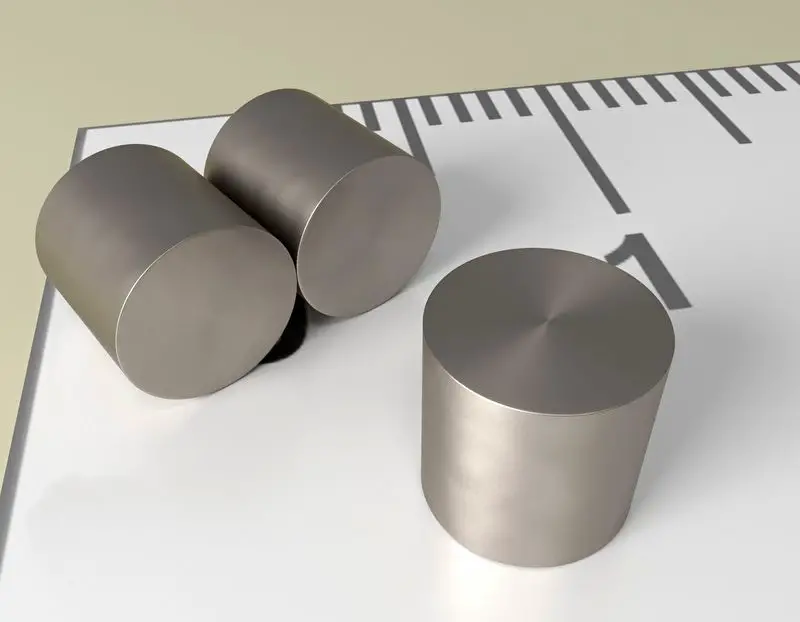
As the name suggests, Alnice is a type of magnetic material that is made from a combination of aluminum (Al), nickel (Ni), and cobalt (Co). They are widely known for their high magnetic field strength, excellent temperature stability, and good corrosion resistance.
These types of permanent magnetic materials find a wide range of industrial applications including automotive, aerospace, electronics, and manufacturing. To be more specific, Alnico magnets find application in electric guitar pickups, electric motors, sensors, meters, speakers, magnetic separators, and various measuring instruments.
Ferrite
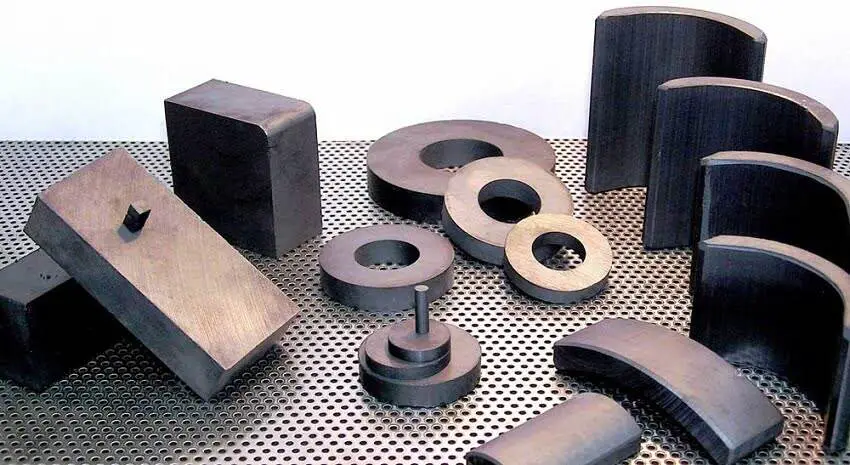
Ferrite magnets, also known as ceramic magnets, are a type of permanent magnet made from a composite of iron oxide and other elements such as strontium (Sr) or barium (Ba). In fact, just because they are made up of iron oxide and ceramic materials, they are highly resistant to corrosion
These types of magnetic materials find a wide range of applications in consumer electronics and electrical equipment like refrigerator magnets, loudspeakers, and microwave ovens. Not to mention, they are also widely used in educational settings, science experiments, and crafts due to their affordability.
Neodymium
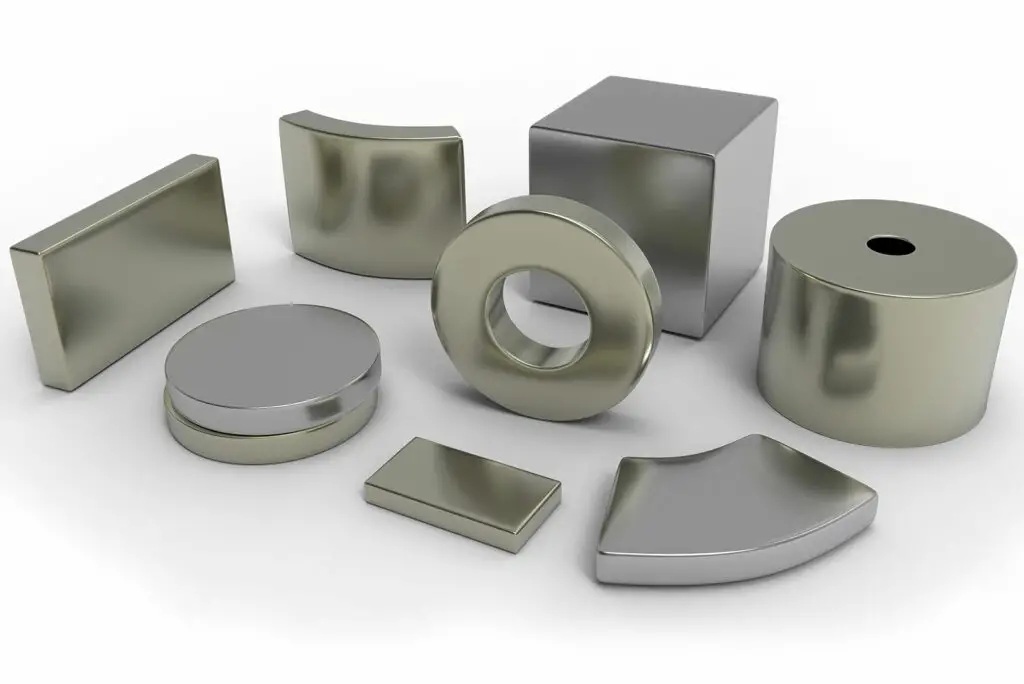
One of the most widely used rare earth magnets is the Neodymium magnet which is made from an alloy of neodymium, iron, and boron to form a tetragonal crystalline structure. In fact, as per the available data, it is one of the strongest permanent magnets available today.
Neodymium magnets are used in a wide range of industrial as well as commercial applications. Just because of their very high magnetic strength, they are particularly suitable for applications that require compact size and high performance such as magnetic resonance imaging (MRI) machines, renewable energy devices, etc.
Iron

Last but not least one on my list of industrial examples of magnetic materials is Iron. It is not only one of the most abundant elements available on earth. It is also one of the most well-known magnetic materials.
Since iron shows strong ferromagnetic properties, it is regarded as one of the most ideal contenders for making permanent magnets. Its applications include manufacturing magnets to be used in electrical appliances, motors, transformers, etc.
Some Other Magnetic Materials Examples in Daily Life
Apart from the above-mentioned ones, I am also mentioning a few here.
- Cobalt
- Platinum-cobalt Alloy
- Gadolinium
- Nickel
- Samarium Cobalt
- Iron-Nickel Alloy
- Yttrium Iron Garnet, etc.
That’s it for this post. If you like this article, share it if you like, like it if you share it. You can also find us on Mix, Twitter, Pinterest, and Facebook. Hey man, If you have come this far, do give us feedback in the comment section. It would make my day. You can also make a donation. Your donations will help us to run our website and serve you BETTER. Cheers!!!
You might also like:
- What are Superconductors, definitions, its types
- 6 Applications of Superconductors You Should Know
- Magnetic Force Examples: Exploring Applications & Uses
